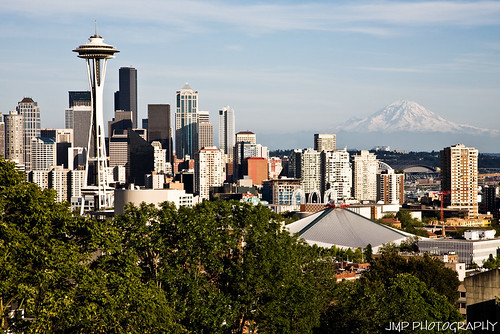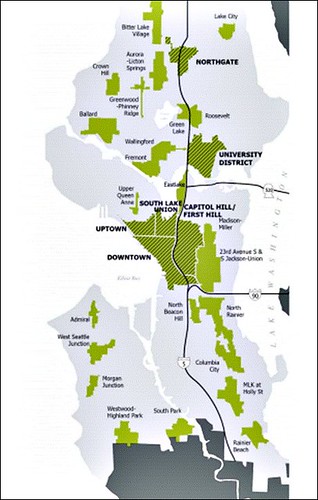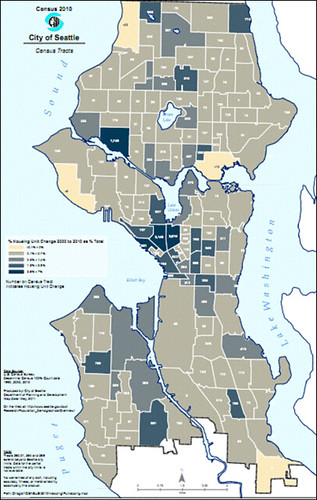A growth plan that means something (in Seattle)

Posted June 10, 2011 at 1:38PM
The unfortunate history of sprawling land use in America has far too often been a story of good plans ignored, compromised, and overridden. The result, of course, has been massive damage to our environment, social fabric, and economy.
But the city of Seattle now has a land use strategy that may avoid those pitfalls. In a comprehensive plan updated in 2004, the city adopted a smart-growth framework for absorbing population growth and new development. The goal is to minimize sprawl by directing new housing and jobs to vacant and underutilized sites in downtown and in designated urban centers and villages within the city. (Northgate, the site of the excellent Thornton Creek project highlighted here earlier this week, is one of the “urban centers” designated for growth in the city’s comprehensive plan.)
The maps below show that the strategy is beginning to work. Compare the designated urban villages (in green) and centers (dark green), in the map on the left, with the parts of the city where the number of housing units has grown in the last decade, and by how much, in the map on the right. The map on the left is from the comprehensive plan; the one on the right was recently constructed by the city from census data. It isn't a perfect match, but it's close:
For more context on the city’s growth management strategy and its rationale, see the video below from the Seattle Department of Planning and Development:
Move your cursor over the images for credit information.


